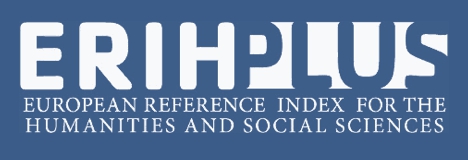EVALUATING GEOCHEMISTRY OF RARE EARTH ELEMENTS IN COPPER DEPOSIT OF AGHBOLAGH, NORTH OF OSHNAVIEH, WEST AZARBAIJAN PROVINCE, IRAN
Abstract
AghBolagh region is located in southwest of West Azarbaijan Province that is 10 km far from north of Oshnavieh. Most of the rocky outcrops in the region include Cambrian deposits (carbonate deposits and clastic deposits (sandstone and shale)). These deposits were later influenced and altered by granite Intrusion. The Intrusion is made of granite and in term of nature, it is magmatic with High-potassium calc-alkaline and peralumin. Also the penetration of intrusion and Ore maker solvent in further distances from the contact point and inside the sequences of sandstone has formed quartzite rocks and ore bearing veins of cooper. The REE pattern normalized to Chondrite for granite, skarn, and marble intrusion and vein deposits shows the fact that, although the REEs pattern is a little smooth and unified, LREEs have more enrichment compared to HREEs in different lithology. The range of normalized numbers to Chondrite in AghBolagh deposit is clearly variable (2.58 to 141.93 for La and 0.14 to 27.27 for Yb). This indicates that there have been clear differences in increase and decrease of LREEs and HREEs during the formation of AghBolagh deposit stones and rocks. The La / Y ratio shows the pH condition of the environment for formation of deposit. This ratio in AghBolagh deposit ranges from 0.09 to 2.26. The granite intrusion shows the most amount of La/Y which is equal to 2. Skarn Zone (Endoskarn and Exoskarn and Ore in Exoskarn) shows two different conditions. The first condition: the part in which LA/Y>1, and this can be observed in samples near the intrusion and Skarn ore is also found in this range. The second condition: the part that La/Y<1, which is near to marble lithology. Also, about vein deposit, the sample is ore making in alkaline conditions, and other samples show acidic conditions. To evaluate the segregation coefficient between REEs, different ratios of REEs including (La/Yb) n ', (La/Sm) n, and (Gd/Yb) n are used. The values of these ratios range from (0.42 to 50.56) for (La/Yb) n; and from (0.25 to 80.125) for (La/Sm) n’; (from 0.006 to 48.8) for (Gd/Yb) n. The highest segregation was between LREEs and HREEs (more than 125) and the least segregation was between MREEs and HREEs during the Skarn process.
References
BROOKING, D.G. Geochemical aspects of radioactive waste disposal. Springer, New York, 1984, 374 p.
COX, D. P. Descriptive model of Zn-Pb skarn deposits. In: COX, D.P.; SINGER, D.A. (eds.). Mineral deposit models: U.S. Geological Survey Bulletin 1693, 1986, p. 90.
COX, K.G., BELL, J.D.; PANKHURST, R.J. The Interpretation of Igneous Rocks. George, Allen and Unwin: London, 1979.
CRINCI, J.; JURKOWIC, I. Rare earth elements in Triassic bauxites of Croatia Yugoslavia. Travaux 19, p. 239–248, 1990.
GHALAM GHASH, J., HOUSHM; MANAVI, S., VOSOUGHI ABEDINI, M. Geology, Geochemistry and Petrogenesis of the Oshnavieh Intrusion (North-West of Iran). Journal of Earth Sciences. Twenty-second year, No 88, p. 219-232, 2013.
IRVINE, T.N., BARAGAR, W.R.A. A guide to the chemical classification of the common volcanic rocks. Canadian Journal of Earth Sciences, Volume 8, p. 523-547, 1971.
KATO, Y. Rare earth elements as an indicator to origins of skarn deposits, example of the Kamioka Zn-Pb and Yoshiwara-Sannotake (Cu-Fe) deposit in Japan. Resource Geology 49, p. 183–198, 1999.
KIKAWADA, Y. Experimental studies on the mobility of lanthanides accompanying alteration of andesite by acidic hot spring water. Chemical Geology 176, p. 137-149, 2001.
KNARCHENKO, S.M.; POKROVSKY, B.G.. The tomtor al¬kaline ultrabasic massif and related REE-Nb deposit, Northern Siberia. Economic Geology 90, p. 676-689, 1995.
MOEINVAZIRI, H.; AHMADI, A. Petrography and Petrology of igneous age of veins. TarbiatMoallem University, Tehran, 2001.
MORRIS, H.T. Descriptive model of polymetallic replacement deposits. In: COX, D.P.; SINGER, D.A. (eds.). Mineral deposit models: U.S. Geological Survey Bulletin 1693, p. 99-100, 1986.
NAQIZADEH. Geological Map 1: 100,000 Oshnavieh. Geological Survey of Iran, 1986, 2005.
PEARCE, J.A.; HARRIS, B.W.; TINDLE, A.G. Trace element discrimination diagrams for the tectonic interpretation of granitic rocks. J. Petrol., 25, p. 956-983, 1984.
PECCERILLO, A.; TAYLOR, S. R. Geochemistry of Eocene calc-alkaline volcanic rocks from the Kastamonu area, Northern Turkey. Contributions to Mineralogy and Petrology, 58, p. 63-81, 1976.
POLLARD, P. J. A special issue devoted to the geology of rare metal deposits, geology of rare metal deposits: An introduction and overview. Economic Geology 90, 489–494, 1995.
RARD, J. A.. Aqueous solubility’s of praseodymium, Europium and lutetium sulfates. Journal of Solution Chemistry 17, 499–517, 1988.
ROLLINSON, H., Using Geochemical data: evolution, presentation, interpretation. Longman: London, 1993, 652 p.
SCHANDL, E. S.; GORTON, M. P. Application of high field strength elements to discriminate tectonic settings in VMS environments. Economic Geology, 97, p. 629-642, 2002.
SHAND S. J. Eruptive Rocks. Their genesis, composition, classification and their relation to deposits. London: Thomas Murby and Co., 1943, 448p.
TABATABAIEMANESH, S. M.; MIRLOHI, A.; MOVAHEDI, M. Petrology and mineral chemistry of Ochestangranitoids (south of Mahallat, Markazi province). Petrology 2(7): p. 51-76 (in Persian), 2011.
TAYLOR, B. E. Origin and significance of C-O-H fluids in the formation of Ca-Fe-Si skarn, Osgood Mountains, Humboldt County, Nevada: Unpublished Ph.D. thesis, Stanford, CA, Stanford University, 1976, 149 p.
TERAKADO, Y.; FUJITANI, T. Behavior of the rare earth elements and other trace elements during interactions between acidic hydrothermal solutions and silicic volcanic rocks, southwestern Japan. Geochimica et Cosmochimica Acta, Volume 62, Issue 11, p. 1903-1917, 1998.
VILLASECA, C., BARBERO, L., ROGERS, G. Crustal origin of Hercynianperaluminous granitic batholiths of central Spain: petrological, geochemical and isotopic (Sr, Nd) constraints. Lithos, 43, p. 55-79, 1998.
WILSON, M. Igneouspetrogenesis: a global tectonic approach: London, Unwin Hyman, 1989, 466 p.
WOOD, S.A. The aqueous geochemistry of the rare-earth elements and Yttrium. Theoretical predictions of speciation in hydrothermal solutions to 350°C at saturation water vapor pressure. Chemical Geology 88, p. 99–125, 1990.
YUSOFF, Z.M., NGWENYA, B.T.; PARSONS, I. Mobility and fractionation or REE during deep weathering of geochemically contrasting granites in a tropical setting, Malaysia. Chemical Geology 349–350, p. 71–86, 2013.
ZAMANIAN, H. Iron mineralization related to the Almoughlagh and south Ghorveh batholiths with specific refrenceti the Baba Ali and Gelali deposits. University of Pune, 2003, 220p.
ZAMANIAN, H., RADMARD, K. Geochemistry of rare earth elements in the Baba Ali magnetite skarn deposit, western Iran- a key to determine conditions of mineralization. Geologos 22, 1: p. 33-47, 2016.

This work is licensed under a Creative Commons Attribution-NonCommercial 4.0 International License.
Policy Proposal for Free Access Journals
Authors who publish in this journal agree to the following terms:
a. Authors retain the copyright and grant the journal the right of first publication, with the work simultaneously licensed under the Creative Commons Attribution License which allows the sharing of the work with acknowledgment of the authorship of the work and initial publication in this journal.
b. Authors are authorized to take additional contracts separately, for non-exclusive distribution of the version of the work published in this journal (eg publish in institutional repository or as a book chapter), with acknowledgment of authorship and initial publication in this journal.
c. Authors are allowed and encouraged to publish and distribute their work online (eg in institutional repositories or on their personal page) at any point before or during the editorial process, as this can generate productive changes, as well as increase the impact and The citation of published work (See The Effect of Free Access).





















